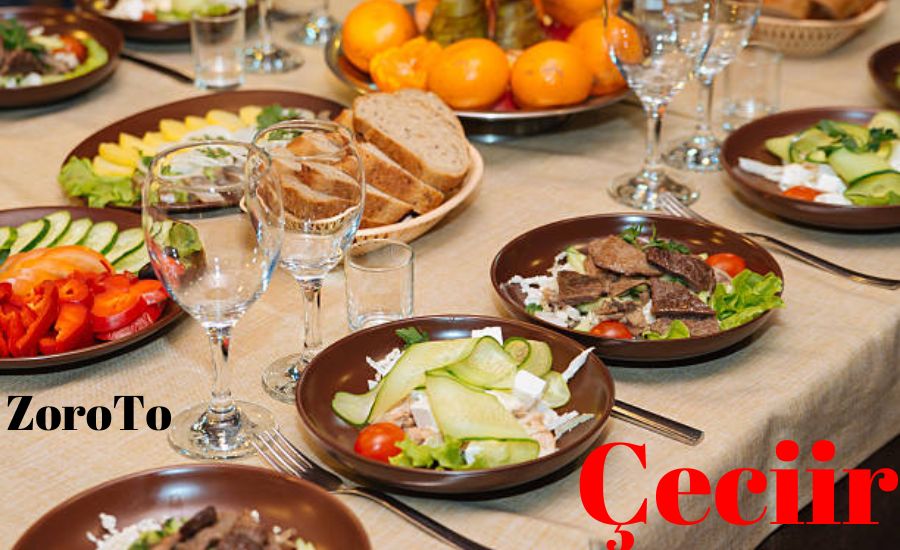In the rich tapestry of world cuisines, certain ingredients transcend their humble origins to become symbols of cultural heritage and culinary innovation. Çeciir is one such marvel—a cornerstone of traditional cooking and modern gastronomy alike. This article delves into the essence of çeciir, exploring its history, features, benefits, and the pivotal role it plays across various culinary landscapes.
Understanding Çeciir
At its core, çeciir refers to dishes or ingredients derived from chickpeas or chickpea flour, celebrated for their versatility and depth of flavor. From the bustling markets of Turkey to the fusion restaurants of global cities, çeciir embodies a journey through time and taste.

The Historical Footprint of Çeciir
Çeciir’s story begins in the ancient fields where chickpeas, one of the oldest cultivated legumes, were first sown. These tiny but mighty beans have nourished civilizations for millennia, with their cultivation dating back over 7,500 years in the Middle East. As trade routes expanded, chickpeas and the culinary practices surrounding them traveled across continents, laying the foundation for çeciir’s diverse expressions in various cultures.
Features That Define Çeciir
Culinary Flexibility
The culinary applications of çeciir are boundless. It can be the star in soups and stews, the base for flours in gluten-free baking, or the crunchy hero in salads and snacks. Its neutral yet distinct taste profile allows it to adapt to both sweet and savory creations, making it a favorite among chefs and home cooks alike.
Cultural Tapestry
Çeciir is not just food; it’s a cultural artifact, reflecting the traditions, celebrations, and daily rhythms of the communities that cherish it. Whether served in a festive meal, shared among friends, or enjoyed in solitude, çeciir bridges the past with the present, inviting everyone to partake in its rich history.
The Nutritional Powerhouse of Çeciir
Chickpeas, the heart of çeciir, are a nutritional powerhouse. Packed with protein, fiber, vitamins, and minerals, they offer numerous health benefits. From supporting heart health and digestion to providing essential nutrients for plant-based diets, çeciir is more than just a tasty ingredient; it’s a cornerstone of a healthy lifestyle.
Çeciir’s Global Journey and Modern Interpretations
As global cuisine becomes increasingly interconnected, çeciir has found new life in innovative dishes that transcend traditional boundaries. Vegan and vegetarian movements have embraced it as a protein-rich alternative to meat, while health-conscious eaters have turned to chickpea flour as a gluten-free baking solution. Each new recipe adds to çeciir’s evolving story, showcasing its timeless appeal and adaptability.
Preserving the Essence of Çeciir
In the face of globalization and the fast pace of modern life, preserving the traditional practices and recipes of çeciir is more important than ever. Efforts to document and share these culinary traditions ensure that çeciir remains a living, breathing part of our cultural heritage, celebrated by future generations.
Conclusion: A Culinary Legacy
Çeciir stands as a testament to the enduring Power of food to connect us—to our past, to each other, and to the wider world. Its journey from ancient fields to contemporary kitchens mirrors our own evolving relationship with food, one that values nutrition, flavor, and the stories that ingredients carry within them. As we continue to explore and innovate, the legacy of çeciir serves as a reminder of the simplicity and richness to be found in a single ingredient, inviting us to savor every bite of this culinary treasure.
FAQ’s On Çeciir
What is çeciir?
Çeciir generally refers to dishes or ingredients made from chickpeas or chickpea flour. It’s known for its versatility, used in various culinary applications across many cultures, primarily in Middle Eastern, Mediterranean, and South Asian cuisines.
Can çeciir be used in gluten-free cooking?
Yes, çeciir, especially in the form of chickpea flour, is an excellent gluten-free option. It can substitute traditional wheat flour in many recipes, offering a nutritious alternative for those with gluten sensitivities or celiac disease.
Is çeciir nutritious?
Absolutely. Chickpeas, the core of çeciir, are rich in protein, fiber, and essential nutrients like iron, phosphorus, and folate. They support heart health, aid in digestion, and can help regulate blood sugar levels.
How can çeciir be incorporated into a diet?
Çeciir can be included in the diet in many forms, such as hummus, falafel, soups, stews, and salads. Chickpea flour can also be used in baking and cooking, serving as a base for pancakes, fritters, and even as a binder in vegan recipes.
What are the environmental benefits of consuming çeciir?
Chickpeas, like many legumes, have a low environmental footprint. They require less water compared to other protein sources and can enrich the soil with nitrogen, reducing the need for chemical fertilizers. Incorporating çeciir into meals is a sustainable dietary choice.
Can çeciir be used in sweet dishes?
Yes, chickpea flour has a subtle taste that can blend well into sweet dishes. It can be used to make gluten-free cakes, cookies, and even sweet pancakes, offering a healthier alternative to traditional sweets.
How does çeciir contribute to culinary diversity?
Çeciir’s adaptability means it can be integrated into countless recipes, reflecting the culinary traditions of various cultures. It serves as a bridge between traditional and modern cooking, enabling the exploration of new flavors and textures while preserving cultural heritage.
Is çeciir suitable for vegan and vegetarian diets?
Yes, çeciir is ideal for plant-based diets. Chickpeas provide a significant source of protein, essential for those following vegan or vegetarian lifestyles. Its versatility also allows for creative culinary expressions that don’t rely on animal products.
How can I store chickpea flour to maintain its freshness?
Chickpea flour should be stored in an airtight container in a cool, dry place. For longer storage, you can keep it in the refrigerator or freezer to extend its shelf life and preserve its freshness.
Are there any cultural traditions associated with çeciir?
Çeciir holds a deep cultural significance in many regions, symbolizing hospitality, tradition, and community. It’s often featured in festive meals, religious ceremonies, and family gatherings, showcasing its role in cultural identity and communal celebration.